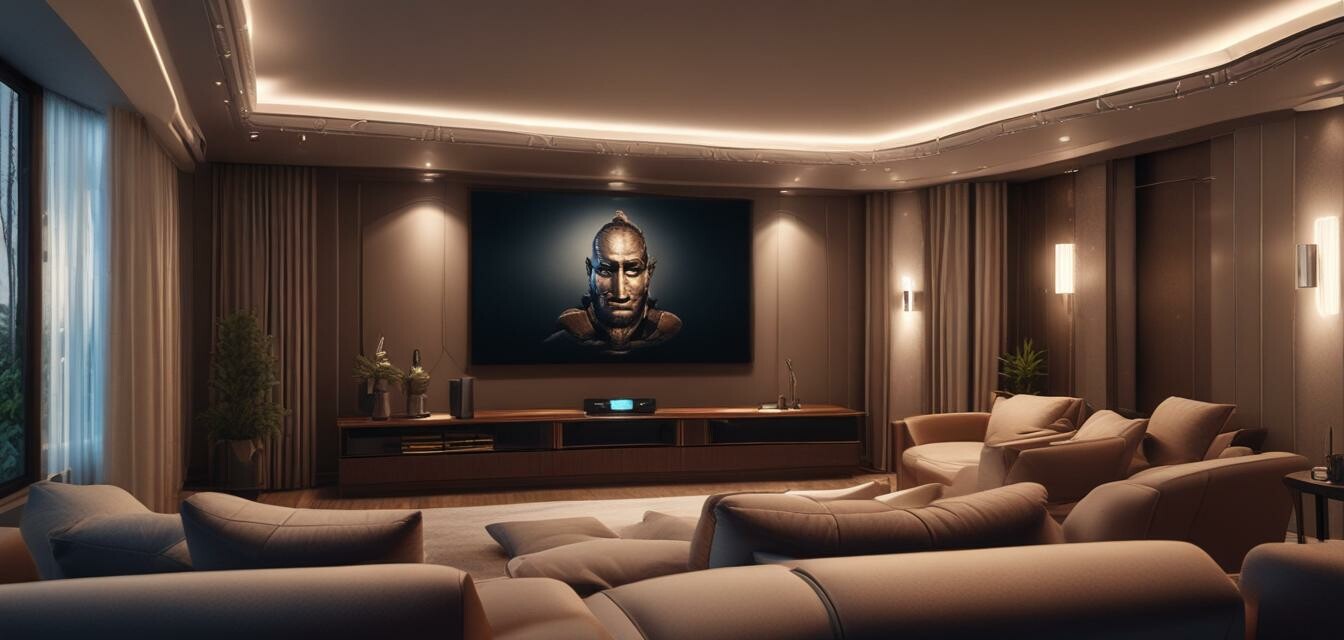
How 120Hz Refresh Rate Enhances Home Cinema Viewing
Key Takeaways
- 120Hz refresh rate provides smoother motion and clearer visuals, ideal for fast-paced movies and gaming.
- Enhanced refresh rates reduce motion blur, resulting in a more immersive viewing experience.
- Compatibility with advanced video technologies is crucial for maximizing the benefits of a 120Hz display.
- Investing in high-end media players and surround sound systems complements the visual experience.
- Understanding your home cinema setup helps in creating the ultimate viewing environment.
As the world of home cinema continues to evolve, the technology behind what we watch becomes increasingly important. One of the standout advancements in recent years is the 120Hz refresh rate. Designed to enhance visual clarity and motion fluidity, a 120Hz refresh rate offers a new level of realism that is particularly advantageous in high-end home cinema setups. In this article, we explore the numerous advantages of a 120Hz refresh rate and how it can elevate your viewing experience.
Understanding refresh rates
Before diving into the specifics of 120Hz refresh rates, let’s briefly discuss what refresh rates mean. The refresh rate, measured in hertz (Hz), indicates how many times a display updates its image in one second. Standard refresh rates include 60Hz, 120Hz, and even higher rates like 240Hz. A higher refresh rate means smoother motion which is crucial during fast-paced scenes in action films or sports broadcasts.
Why 120Hz?
Choosing a 120Hz refresh rate brings unparalleled benefits:
- Smoother images: 120Hz enables faster visual transitions, reducing blurriness during action-packed scenes.
- Improved responsiveness: This refresh rate enhances response times, making it ideal for gaming and fast-paced viewing.
- Reduced motion blur: With twice the refresh rate of 60Hz, motion blur is significantly decreased, allowing for precise detail in quick movements.
How 120Hz enhances your viewing experience
1. Smoother motion for a cinematic feel
The fluidity of visuals offered by 120Hz creates a more cinematic viewing experience. With faster refresh rates, scenes transition seamlessly, making the viewer feel as if they are part of the action. This is particularly evident during chase sequences or whirlwind scenes where clarity can significantly impact immersion.
2. Better for gaming enthusiasts
For those who enjoy interactive entertainment, 120Hz is a game-changer. Gamers often prefer higher refresh rates to enjoy smoother graphics, reduce lag, and enhance responsiveness. If you are into competitive gaming, a high refresh rate can provide a definitive edge.
3. Compatibility with high-definition formats
Modern home cinema projects, such as 4K HDR content, are designed to work best with compatible high refresh rates. This allows you to enjoy your favorite movies and games with stunning detail and clarity. Ensuring your setup can handle high-quality formats enhances the overall experience.
Comparison of refresh rates
| Refresh Rate | Smoothness | Recommended Use |
|---|---|---|
| 60Hz | Standard | Standard TV shows, movies |
| 120Hz | Very smooth | Action movies, sports, gaming |
| 240Hz | Ultra-smooth | High-speed gaming, professional sports |
Setting up a high-end home cinema
Creating the ultimate home cinema requires more than just a high-refresh-rate display. Here are some components essential for a high-end setup:
- High-end media players for enhanced content playback.
- Comfortable seating to ensure extended viewing comfort.
- Projectors and screens for an immersive viewing experience.
- Surround sound systems to complement the visuals with immersive audio.
- Smart home integration for streamlined control over your setup.
Conclusion
Investing in a 120Hz refresh rate is a significant step towards enhancing your home cinema experience. By providing smoother, clearer visuals, it allows you to immerse yourself fully in the immersive world of cinema. Coupled with other high-end components, a 120Hz system can turn your viewing area into a luxurious, state-of-the-art home theater.
Pros
- Smoother visuals for action sequences
- Improved gaming experience
- Reduced motion blur for a clearer image
- Compatibility with 4K HDR content
Cons
- Higher costs for compatible equipment
- Limited availability of 120Hz content
- Potential need for upgraded cables for maximum performance
